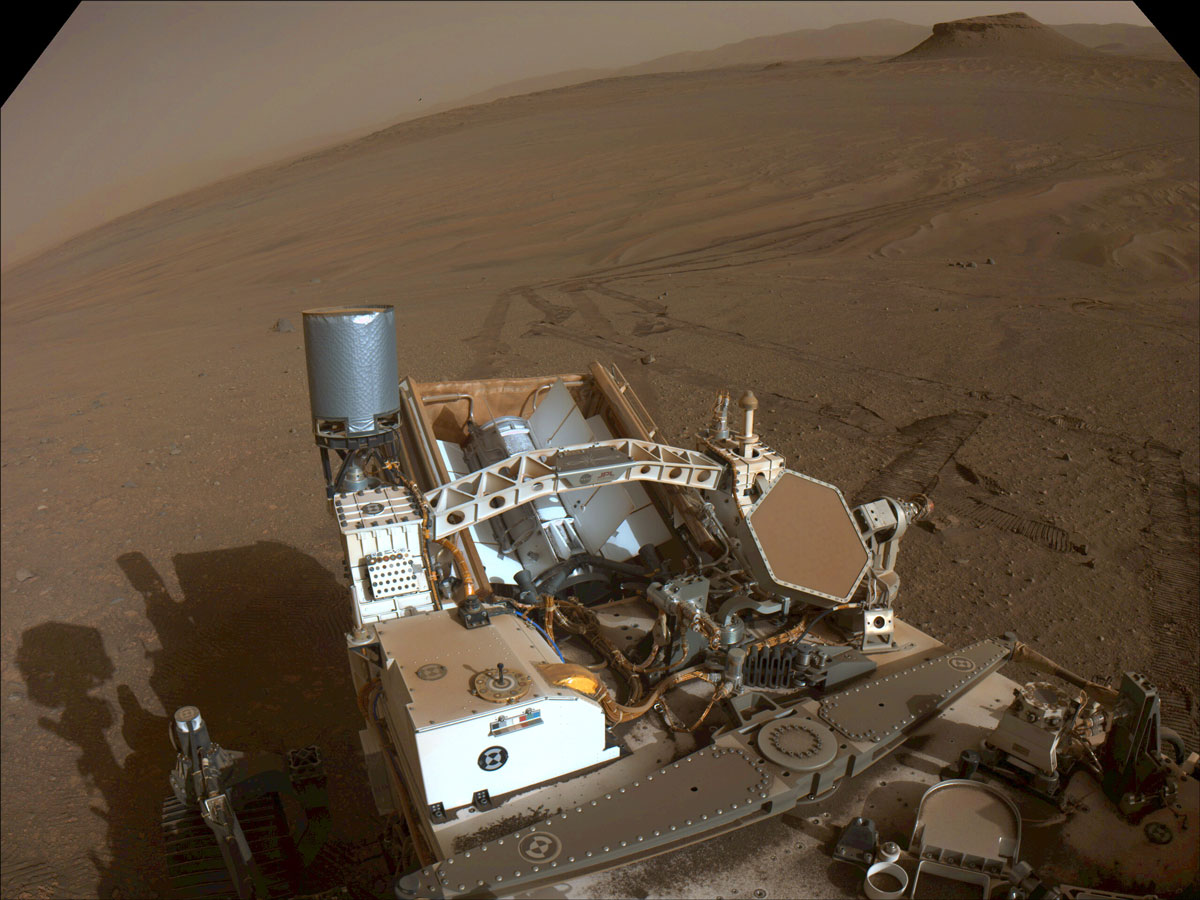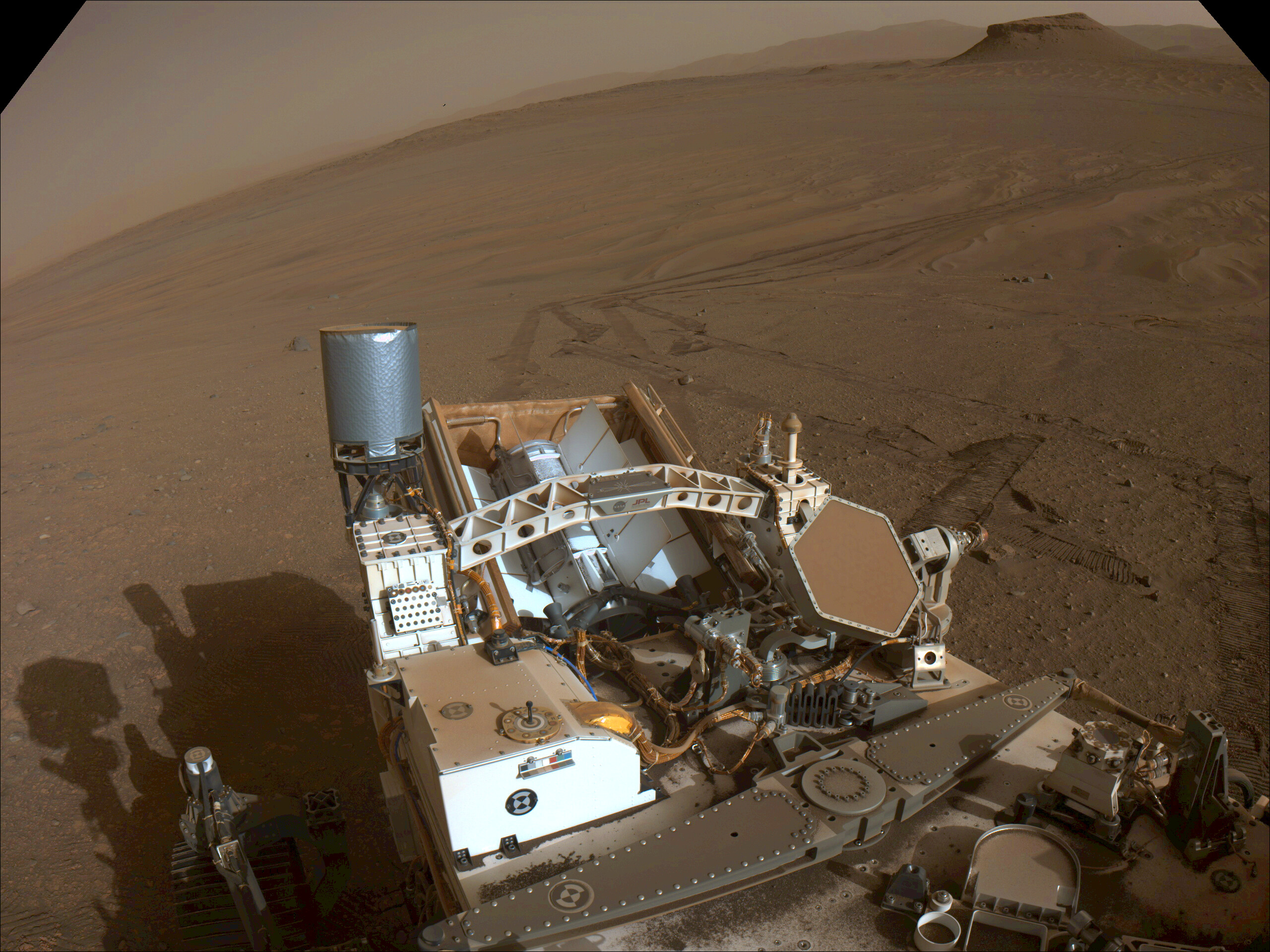Looking Back at Perseverance’s Second Science Campaign

| Credit | NASA/JPL-Caltech |
|---|---|
| Language |
|
This image of the floor of Jezero Crater was taken by one of the Navcam imagers aboard NASA’s Perseverance Mars rover on Feb. 5, 2023, the 698th Martian day, or sol, of the mission.
The rover’s tracks can be seen disappearing into the distance. The flat-topped hill that the science team refers to as “Kodiak,” a remnant of Jezero Crater’s river delta, is in the upper right of image, about 0.6 miles (1 kilometer) away.
A key objective for Perseverance’s mission on Mars is astrobiology, including the search for signs of ancient microbial life. The rover will characterize the planet’s geology and past climate, pave the way for human exploration of the Red Planet, and be the first mission to collect and cache Martian rock and regolith (broken rock and dust).
Subsequent NASA missions, in cooperation with ESA (European Space Agency), would send spacecraft to Mars to collect these sealed samples from the surface and return them to Earth for in-depth analysis.
The Mars 2020 Perseverance mission is part of NASA’s Moon to Mars exploration approach, which includes Artemis missions to the Moon that will help prepare for human exploration of the Red Planet.
NASA’s Jet Propulsion Laboratory, which is managed for the agency by Caltech in Pasadena, California, built and manages operations of the Perseverance rover.
For more about Perseverance: mars.nasa.gov/mars2020/

